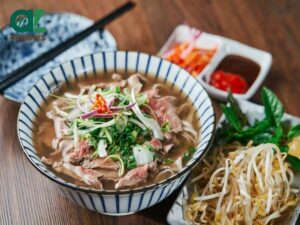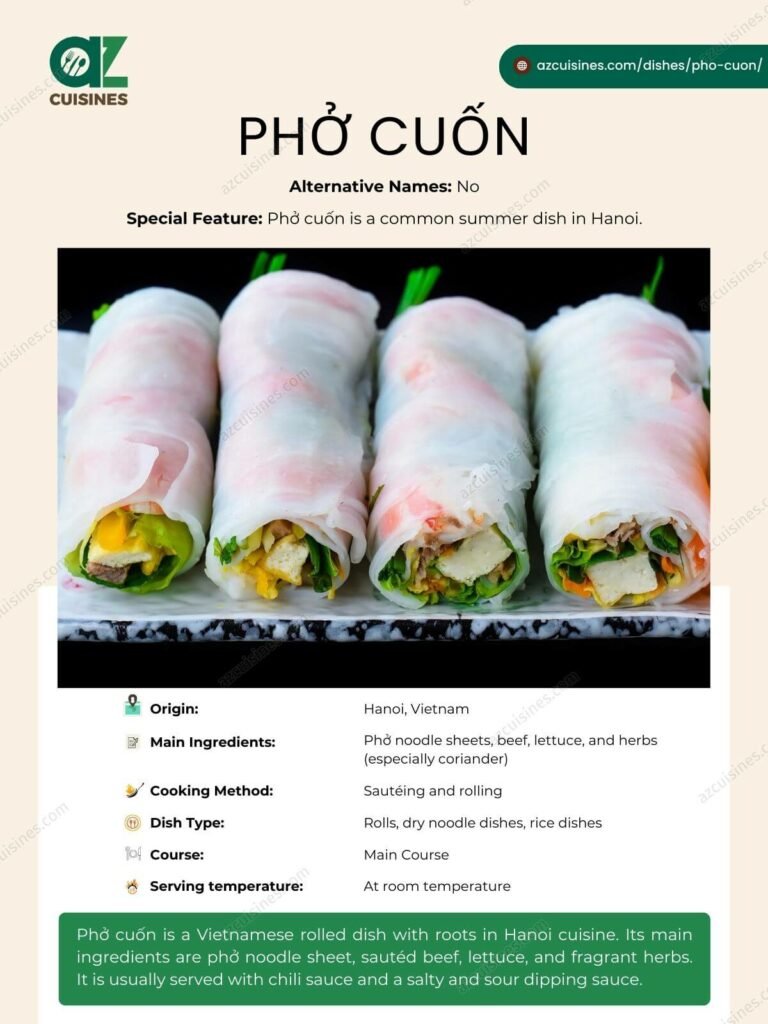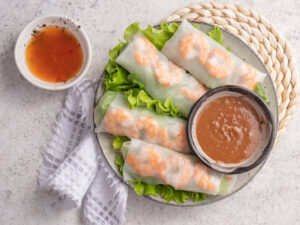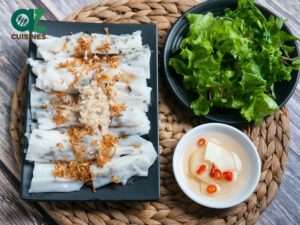Phở Cuốn: Basic Information
Pronunciation
Alternative Name(s)
Dish Type
Course
Mealtime
Popular Phở Cuốn Variations

Phở Bò (Beef Pho)
Phở Cuốn: Ingredients and Preparation
Main Ingredients
Main Cooking Method
Preparation Process
Phở Cuốn: A Deep Dive
Cultural Significance
Taste
Texture
Aroma
Color
Serving Style
Serving Temperature
Accompaniment
Occasions
Seasons
Special Diets
Calories
Popularity
Popular Similar Dishes
- Gỏi Cuốn
- Bánh Cuốn
- Popiah
- Rice Noodle Roll
Popular Dining Area
Phở cuốn, literally “rolled phở,” is a Vietnamese dish resembling summer rolls. It is a Hanoi specialty made by rolling a sheet of phở noodles (flat, thin rice noodles used to make phở) around a savory filling of sautéd beef, lettuce, and fragrant herbs like coriander.
Possible add-ons for phở cuốn are eggs, tofu, pumpkins, beetroots, carrots, and other vegetables. Some people even replace sautéd beef with medium-rare beef for a richer flavor.
Phở cuốn is typically paired with a spicy chili sauce or salty and sour dipping sauce (called nước chấm), a sauce made from Vietnamese fish sauce, vinegar, lime juice, garlic, and chili peppers.
This unique take on phở is an excellent summer dish and beloved street food.
Do you want to know how phở cuốn came about? Read on to find out! I will also present you with the advantages and disadvantages of this dish as well as answer common queries about it. You will also know about some dishes similar to phở cuốn.
Key Points
What Is the History of Phở Cuốn?
Phở cuốn was invented in 2000 by a phở vendor named Vũ Thị Chinh. She owns an eatery at the corner of the Ngũ Xã và Nguyễn Khắc Hiếu streets in Hanoi.
The idea for phở cuốn came into Ms. Chinh’s mind on a hot summer day in 2000 when she realized that hot phở wasn’t the best dish for her customers who were sweating heavily. She responded by rolling fresh phở noodle sheets with sautéd beef and refreshing herbs.
Despite the initial skepticism from the customers, phở cuốn soon became a well-known dish that inspired many variations. While phở cuốn is available in many big cities in Vietnam, Hanoi is still the best place to try it, and Ms. Chinh’s restaurant is the ideal destination.
Before trying this wonderful Vietnamese rolled dish, let’s have a look at its pros and cons.
Pros and Cons of Eating Phở Cuốn
Phở cuốn has the following benefits and shortcomings:
Pros
Cons
After learning about those advantages and disadvantages, you nearly know everything about phở cuốn. Keep on reading to discover how to store this dish, where to find it, and other useful facts.







Truc Tran (Kris)
Senior Food Editor
Expertise
Home Cooking, Meal Planning, Recipe Development, Baking and Pastry, Food Editor, Cooking-video Maker, Vietnamese Food Evaluation Expert
Education
Truc Tran (Kris), an experienced food writer and editor, is great at exploring and describing global cuisines, from simple street food to fancy dining. In her writing, she skillfully mixes different flavors, cooking methods, and culinary traditions, showing the unique character of various cultures through their food and drinks. On azcuisines.com, Kris highlights her knowledge, especially in Asian cuisine and worldwide traditional dishes.